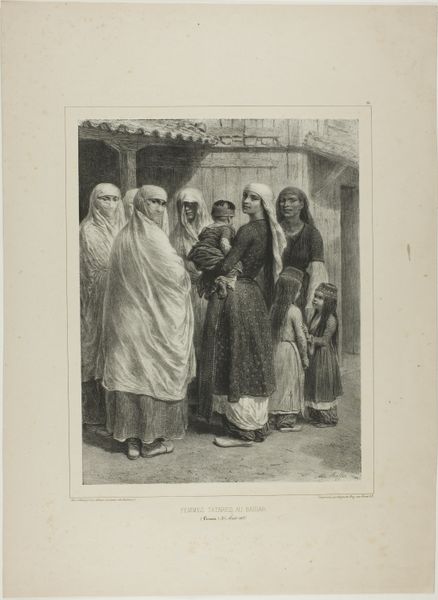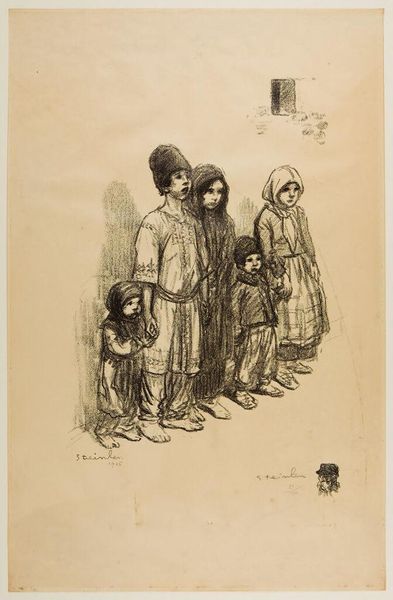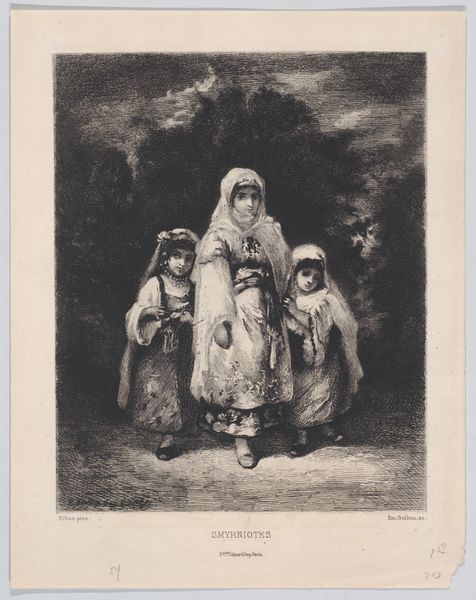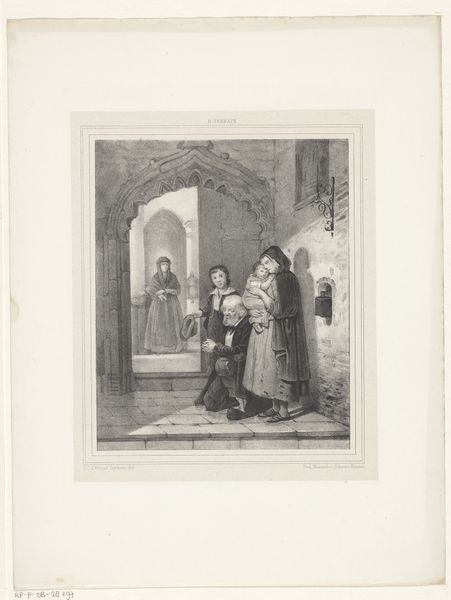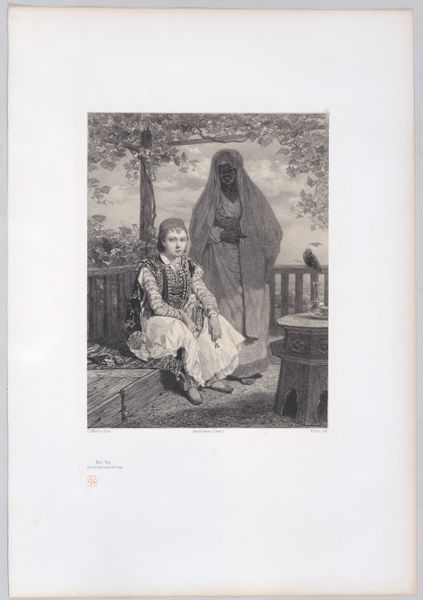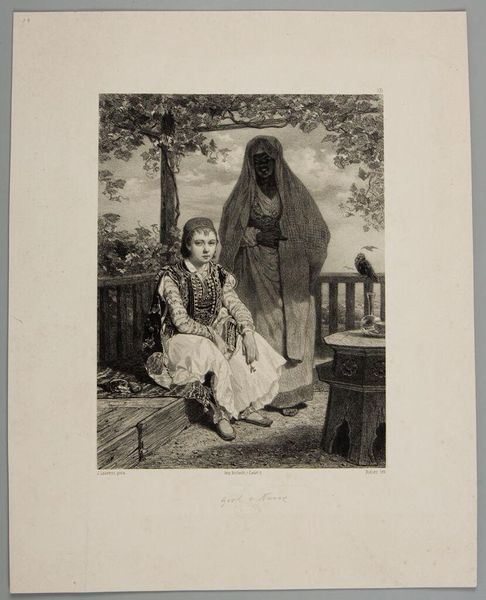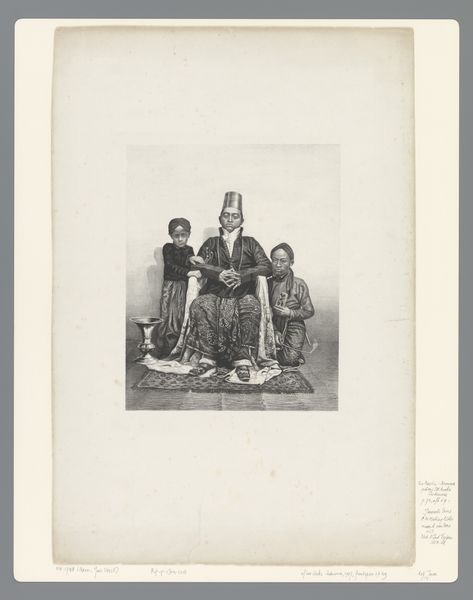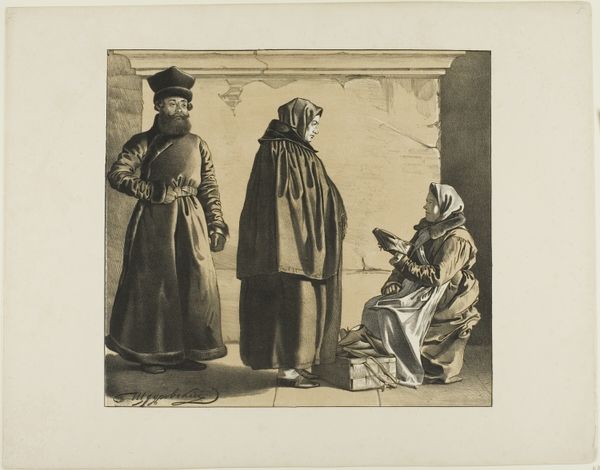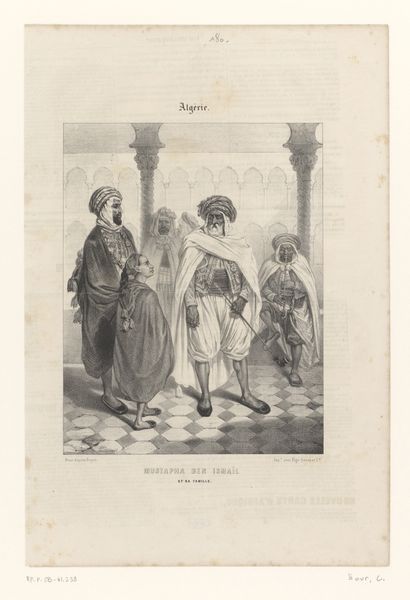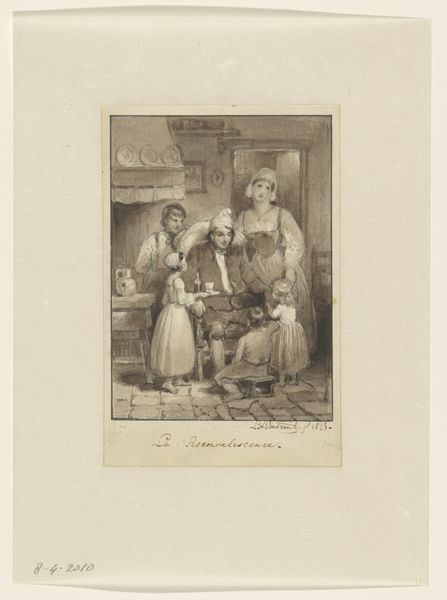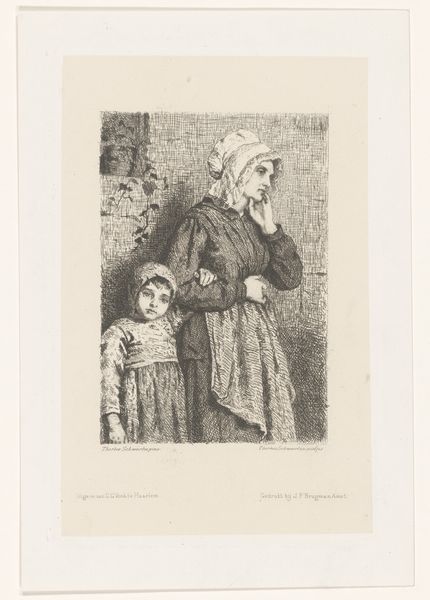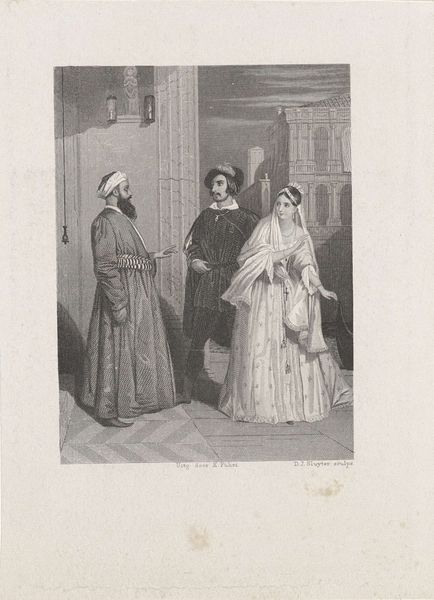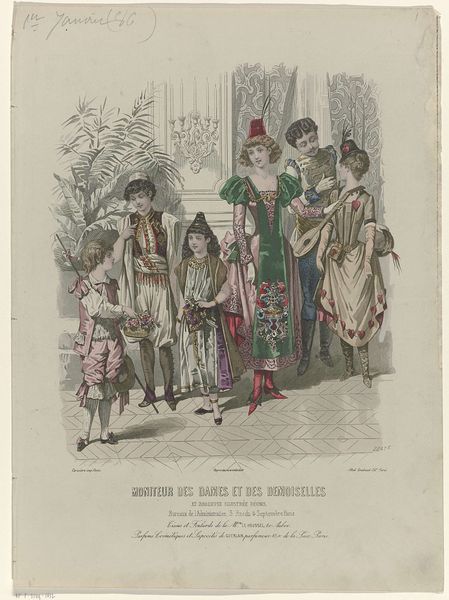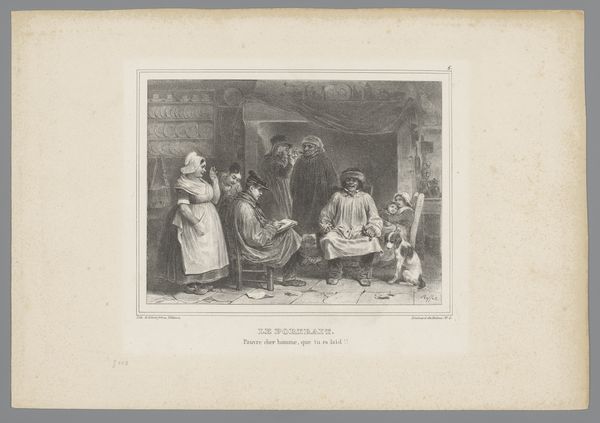
Young Karaïme Woman, Tchioufout-Galech Near Baghtcheh-Saraï, Crimea 1840
0:00
0:00
drawing, lithograph, print, paper
#
portrait
#
drawing
#
lithograph
# print
#
figuration
#
paper
#
romanticism
#
genre-painting
#
monochrome
Dimensions: 256 × 202 mm (image); 257 × 203 mm (primary support); 403 × 300 mm (secondary support)
Copyright: Public Domain
Editor: This is "Young Karaïme Woman, Tchioufout-Galech Near Baghtcheh-Saraï, Crimea," a lithograph by Auguste Raffet from 1840, currently at the Art Institute of Chicago. The details in the faces are striking, and even though it’s monochrome, I find myself drawn to the intricate patterns. What can you tell me about this piece? Curator: Oh, Raffet! He had a knack for capturing not just likeness, but atmosphere, didn’t he? What strikes me immediately is the story this print hints at. Look at the title—the location is key. Raffet, traveling far and wide, probably saw in this woman a symbol of a culture both ancient and vibrant. I wonder, who were the Karaïmes and how does Raffet portray their essence, or maybe *his* perception of their essence? What details leap out at you beyond those patterns you mentioned? Editor: I noticed she’s surrounded by others – are they her family, perhaps? And their clothing – it seems very specific and detailed. The texture of the fabric almost feels real. Curator: Precisely! It's like Raffet aimed to bottle up a moment of authentic life, right? I always feel lithographs have that peculiar kind of immediacy. Their world might seem distant to us now, but notice the careful details. Can you spot any clues about their roles or relationships in their posture or clothing, even beyond those patterns? Editor: The way she holds one child’s hand but doesn’t touch the other. And that figure in the background seems to be a servant, maybe? The details definitely create a sense of social structure. Curator: Excellent eye! Raffet captured not just people but a whole societal snapshot, through pose and textile! You see how he transforms mere ink on paper into a whole world? Next time, maybe look past what *is* shown and wonder about all the untold narratives lurking behind those careful lines... what existed outside the frame! Editor: I will definitely look at art differently from now on. Thank you so much. Curator: The pleasure was mine. Art’s a dialogue, not a monologue, after all.
Comments
No comments
Be the first to comment and join the conversation on the ultimate creative platform.
